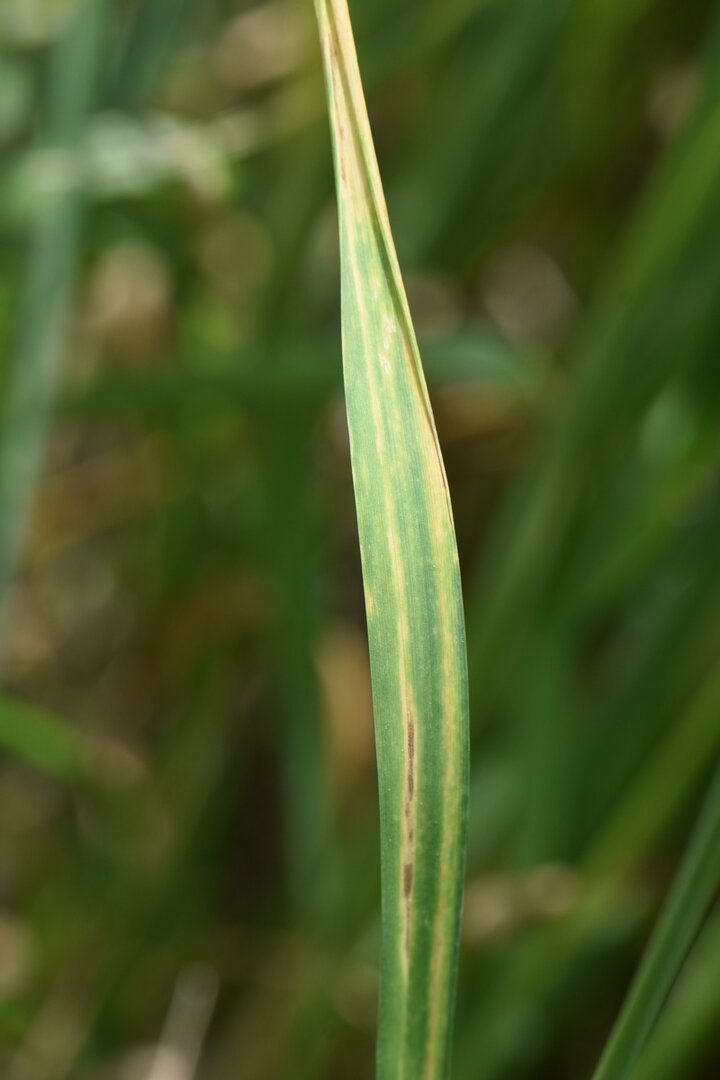During a survey of wheat fields in south central and southeast Nebraska on May 27, stripe rust (Figure 1) was found at trace levels in a grower’s wheat field in Thayer County in southeast Nebraska. There have also been a few reports of stripe rust in the south central part of the state. Most fields surveyed on May 27 looked green and luxuriant (Figure 2), thanks to much needed recent rains. One field that is behind in development was at the boot (Feekes 10) growth stage. The rest of the fields were fully headed (Feekes 10.5) or flowering (Feekes 10.51). There were varying levels of diseases, the most common of which were barley yellow dwarf (Figure 3) and Septoria tritici blotch (Figure 4). These two diseases were present in all surveyed fields mostly at low levels, but some parts of one field had moderate to high levels of Septoria tritici blotch. Trace to low levels of Cephalosporium stripe (Figure 5), loose smut (Figure 6) and wheat streak mosaic (Figure 7) were present in some fields.







Management
Stripe rust has arrived late in the growing season in Nebraska. However, with the recent rainfall in southwest, south central, and southeast Nebraska, it can develop aided by high humidity and cool nights. Dry weather and warmer temperatures in the coming days will help to slow down stripe rust development. The recent rains also have increased the risk for Fusarium head blight and the development of fungal leaf spot diseases, mainly Septoria tritici blotch. Because the majority of wheat in the southern tiers of counties is heading or headed and some is flowering, for those fields that have not been sprayed, a single fungicide application at early flowering targeting Fusarium head blight, stripe rust, and Septoria tritici blotch is recommended. For those fields that were sprayed earlier to protect the flag leaf, a second spray targeting Fusarium head blight may be warranted. Follow label directions and restrictions when applying fungicides. Barley yellow dwarf, wheat streak mosaic, Cephalosporium stripe, and loose smut cannot be controlled once they occur.

